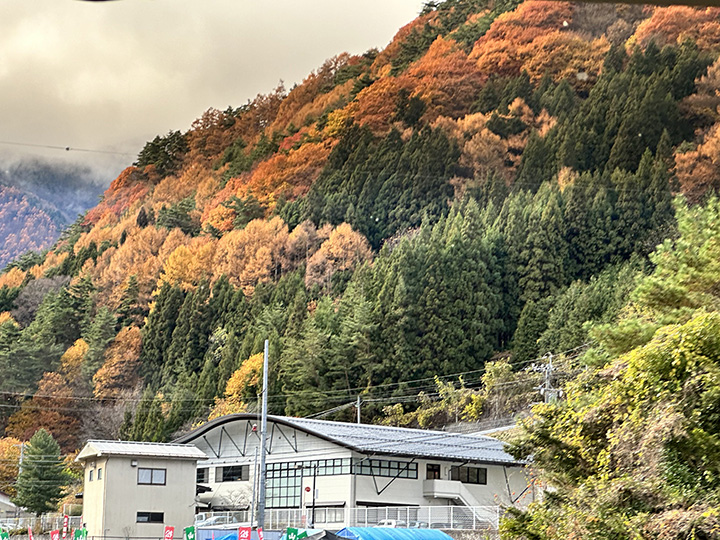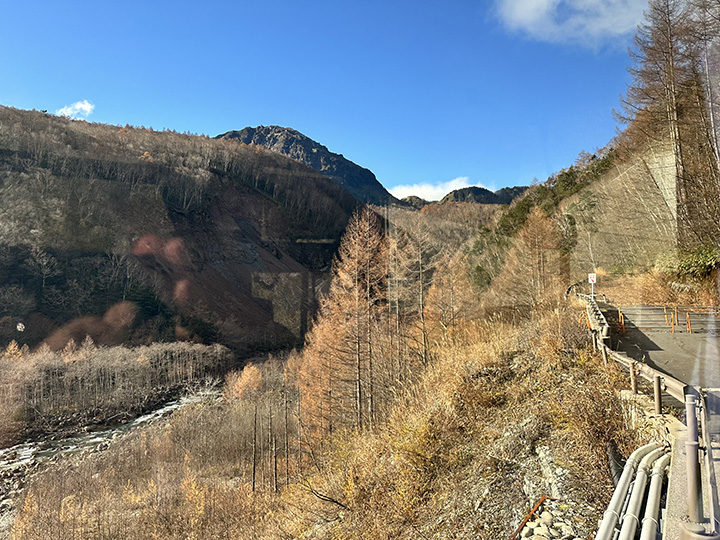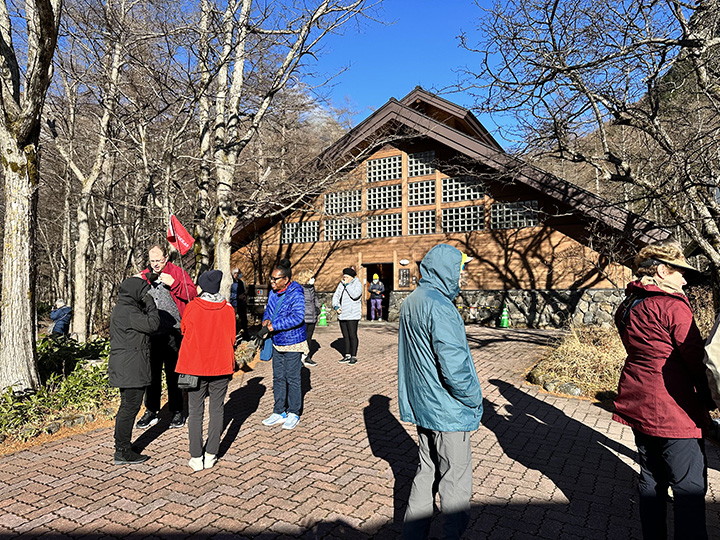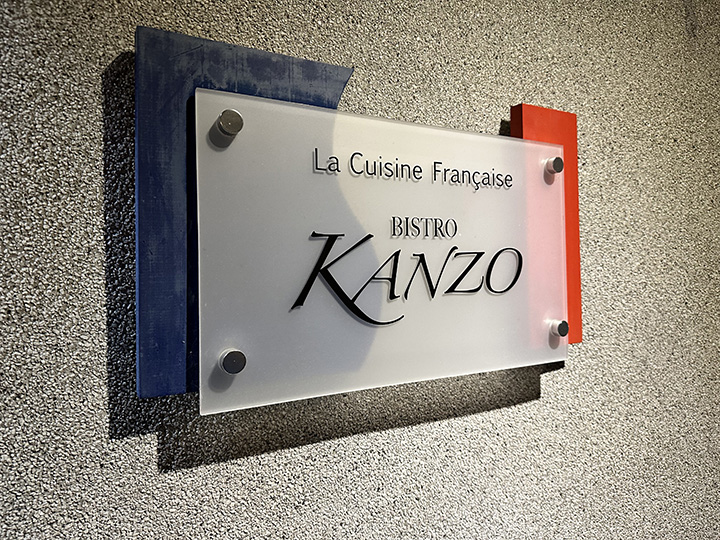|
Today we rode in a bus from Kiso to Takayama, and along the way we visited a castle, a miso factory, and a national park high in the Japanese Alps.
Breakfast was interesting this morning. You can see we are cooking it ourselves at the table again. And how about that nice origami that the staff made for each of us?
The hotel kitchen staff called this a “western breakfast.” They wanted to make us feel at home so they made sure we got bacon and eggs. This is what it looked like just after they lit the sterno. I put the lid back on and let it do its thing for about five minutes.
And that’s what it looked like when it was done. Actually it tasted like an egg on top of a couple of slices of something that I am sure came from a pig somehow. We also had miso soup and rice and other nice things.
The ryokan gift shop sold t-shirts.
I bought one for David. It says "Middle Mountain Road," which is the translation of Nakasendo.
We boarded our bus and waved goodbye to the staff.
And then the 89-year-old proprietor came aboard, thanked us profusely for coming, and wished us safe journeys. She was so glad to see Americans coming again.
Then we hit the road.
Mountains, here we come. That big white tent structure in the distance turned out to be the local outdoor sumo wrestling ring.
The fall colors were nice, but they had been more vivid a couple of days ago before yesterday’s rain came and watched a lot of leaves off the trees.
Still pretty though.
Crops have been harvested by now.
Fields are looking bare.
Except for those with greenhouses.
Kaori passed out treats. Ever had any green Kit Kat bars? I was afraid it was seaweed flavor but Kaori insisted it was green tea. It was fine, and that’s all I will say.
How about white chocolate?
Our first stop was the city of Matsumoto where we toured the grounds of Matsumoto Castle. Also known as “Crow Castle” due to its black lacquer exterior, it is one of Japan’s five premiere historic castles.
There has been a fortification here since 1504.
But the current structure dates only from 1594.
It's the new one.
Japan has nearly 5000 castle sites scattered across the land from Okinawa to Hokkaido. Now, there are about 100 with existing fortifications, keeps, and other structures remaining. Of those hundred, there are only 12 complete and original castles that have withstood natural disasters and cultural and political upheavals. Today, many of the cities you visit are former castle towns, with modern communities on sites of historic fortifications.
Kathleen gives us the lay of the land.
Let's go in the gate that will take us to the castle grounds.
That is some samurai armor.
And that is a space azalea. I am compelled to include it here. Once a NASA guy, always a NASA guy.
There, that explains it.
The line to get in the actual castle is much too long today, but this looks like a good spot for a group picture, so...
Hi group!
Uh oh. Kathleen has run into some fierce, covid-masked ninja warriors!
Their pose strikes fear in my heart. I think it's the threat of being fanned.
Bill fit right in.
It’s hard to imagine now, but Japan has nearly 5000 castle sites scattered across the land from Okinawa to Hokkaido. Now, there are about 100 with existing fortifications, keeps, and other structures remaining. Of those hundred, there are only 12 complete and original castles that have withstood natural disasters and cultural and political upheavals. Today, many of the cities you visit are former castle towns, with modern communities on sites of historic fortifications. We are looking at descriptions of all the extant castles.
Sengoku Jidai (1467 – 1615), the Warring States Period of Japan, saw
the flourishing of castle construction as local warlords sought to
maintain control of their domains. This is the era in which great
national treasures such as Himeji, Hikone, and Matsumoto Castles
were constructed. At sites such as these, warlords had palatial
estates and holdings below their fortifications. In times of battle,
they used the tenshukaku, or castle keep fortifications as their
base of operations.
The ponds are well stocked with fish.
And maybe a little overstocked with lotus. I'm guessing this looked nice earlier in the year.
Looks like a nice town to live in.
Now we have arrived at the Ishii miso brewery. Miso is Japan’s traditional seasoning and health food. Made from fermented soybeans mashed into a thick paste the mini health benefits of miso have been well documented in scientific studies. Well, that’s what they tell you.
Miso is aging in those big barrels. It was like a winery tour. The miso gets transferred from vat to vat as it ages.
We had a very interesting lecture on the brewing of miso and its health benefits. I thought about asking if miso contains snake oil but then I thought better of it.
That’s Kathleen showing me miso at various stages of aging. On the
left is one-year-old miso, in the middle it’s two years old, and on
the right is a bag filled with three-year-old miso. See how it gets
darker as it ages?
The Road Scholars are getting hungry.
But the payoff was the miso ice cream for dessert.
Well that's a pretty pot with drippy water.
And that's a big old antique miso mixing pot.
We had passed the Matsumoto City Museum of Art while driving to the miso factory and when a few of the Road Scholars realized what they were seeing they almost insisted on coming back.
Yayoi Kusama is a world famous Japanese artist known for her signature polkadots. Matsumoto is her hometown and the local art museum is devoted to her work.
The museum was closed today, but because we had some extra time due to missing the inside tour of the castle, we just walked over to the museum and enjoyed the grounds.
Bill decided the polka dots were fine, just fine.
There were plenty of them.
Then we headed off down the road.
Where we saw pretty colors.
Lots of pretty colors.
Plenty of pretty colors.
More pretty colors ...
...than you could shake a stick at.
The display just went on and on.
And Bill kept clicking his camera.
Then we started seeing mountains.
And tunnels through the mountains. We are headed to a scenic area called Kamikochi in Chubu Sangaku National Park. The road that is taking us there goes through tunnel after tunnel after tunnel.
And lakes.
And more tunnels. Bill learned that long straight tunnels are old tunnels while long curvy tunnels are relatively new. They didn't have the technology to build curvy tunnels back in the day.
It's a mountain stream!
That's curvy.
Nice scenery for out drive.
And a dam.
And real, honest to goodness peaks.
We have arrived at the national park.
Much of it looks like national parks in the USA.
Kathleen is going to take us on a short walk.
Alongside a river.
A nice big meandering river.
Kathleen said there are thermal vents up there but you can't see the steam for the clouds.
Bill loves this stuff.
And there it is. Kamikochi means, “ the place where the gods descend.” Looks about right.
It's so pretty. And we're here for only a couple of hours or so.
And now it's time to go.
Everybody on the bus!
We have arrived in Takayama, checked into our hotel which has honest to goodness bed beds (no sleeping on the floor tonight), and walked about a half mile to a French/Japanese restaurant.
This will be a welcome change from the Japanese food we have been eating.
We were even given knives and forks for this.
And there it is: my dinner of wagyu beef which I forgot to take a
picture of before I dived in. The fancy expensive Japanese beef you
have read about is every bit as tender and delicious as they say.
|










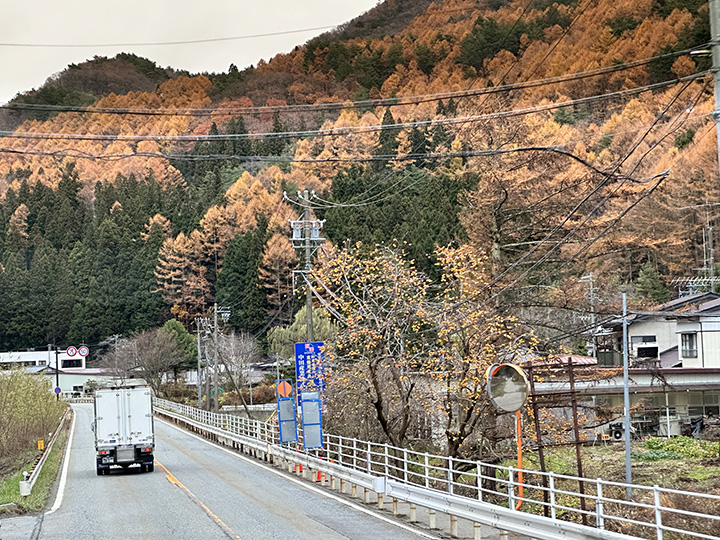




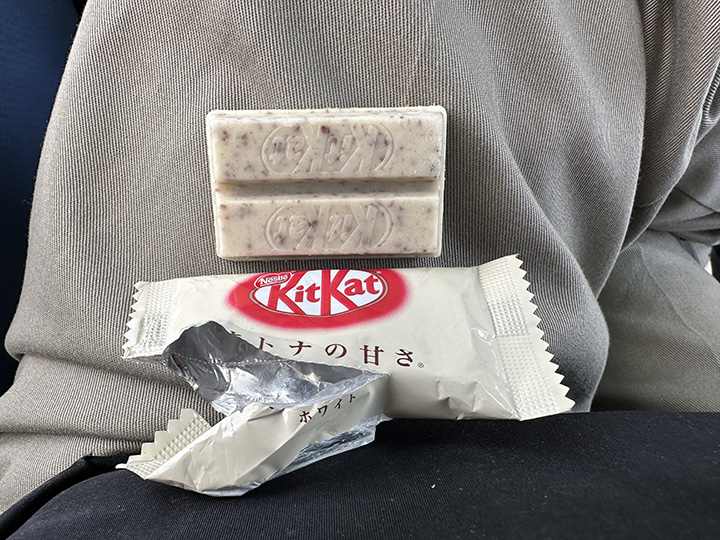







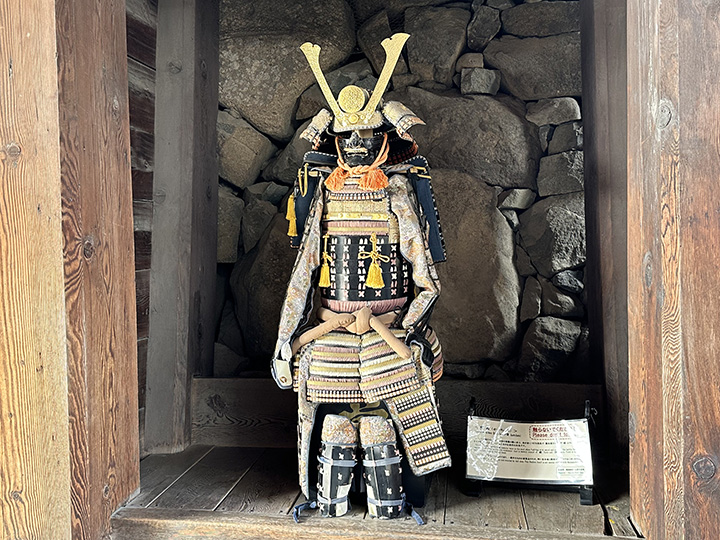



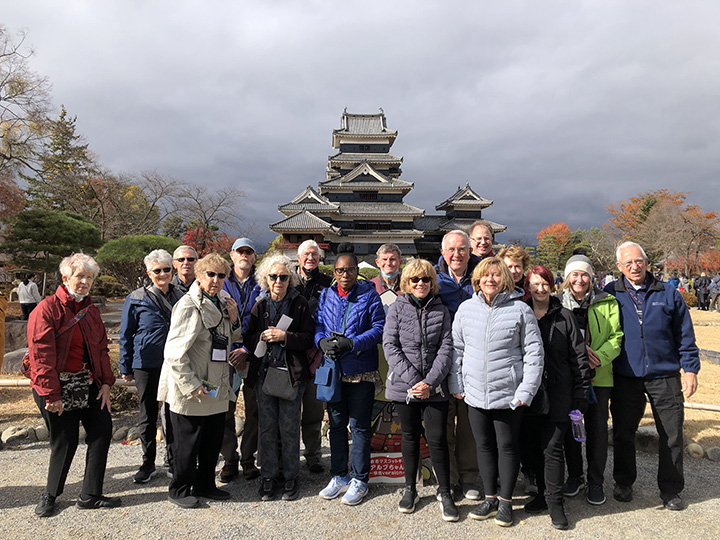
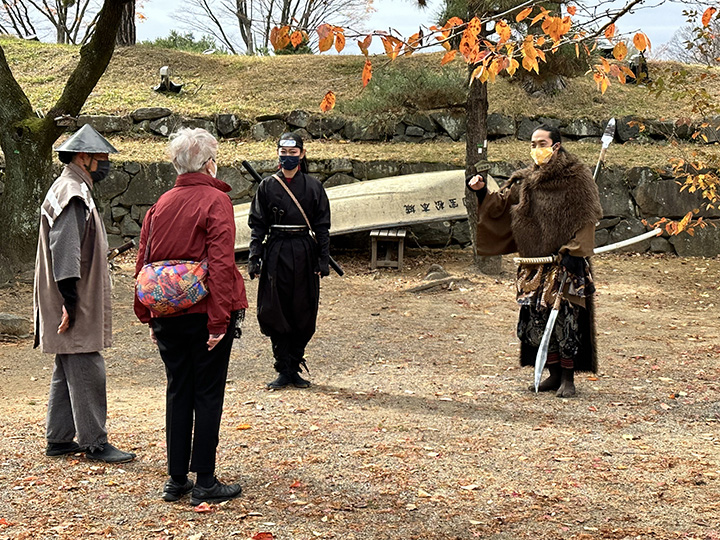












 We
We had a very nice lunch here that featured miso flavored beef stew
that was delicious.
We
We had a very nice lunch here that featured miso flavored beef stew
that was delicious. 










